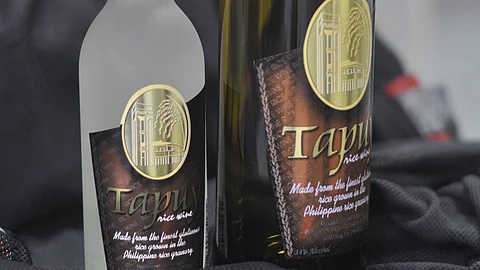
- NEWS
- the EDIT
- COMMENTARY
- BUSINESS
- LIFE
- SHOW
- ACTION
- GLOBAL GOALS
- SNAPS
- DYARYO TIRADA
- MORE

Researchers in the Philippines are turning to a centuries-old local tradition — the making of tapuy, a native rice wine — to unlock new health benefits. A new study reveals that the byproduct of this fermented drink, known as lees, may be packed with compounds that can fight aging and boost gut health.
Traditionally discarded after fermentation, tapuy lees are now gaining attention as a potential functional food, offering promising results in animal testing. Researchers found that lees made from Ballatinao black rice, an heirloom grain from the Cordillera region, contain high levels of antioxidants and polyphenols, substances known to reduce oxidative stress and inflammation — two key contributors to aging.
In tests using fruit flies (Drosophila melanogaster), the lees not only improved gut microbiota by increasing probiotic bacteria like Lactobacillus plantarum and Acetobacter persici, but also extended lifespan — even under stress conditions like heat and starvation.
The study also found that flies fed with tapuy lees had increased levels of superoxide dismutase, an enzyme that protects cells from age-related deterioration. Researchers compared the effects to inulin, a well-known commercial prebiotic, and found the tapuy lees to be just as effective — and in some cases, even better.
Importantly, the Ballatinao variety of black rice used in making the most potent tapuy is already known for its rich antioxidant content. Cultivated by indigenous communities in northern Luzon, this supergrain could play a vital role in both preserving Filipino food heritage and advancing wellness science.
“Given that tapuy lees are rich in proteins, fibers, and antioxidants, and that they support probiotic gut bacteria, they could be an inexpensive and sustainable source of health-boosting nutrients,” the researchers wrote.
This discovery highlights not only the health potential of traditional Filipino practices, but also the possibility of creating supplements or fortified foods from what was once considered winemaking waste.
The study was funded by the Department of Science and Technology - Philippine Council for Health Research and Development. While results are currently based on animal studies, researchers stress that further clinical trials are needed to confirm benefits in humans.
If validated, tapuy lees could add to the growing list of homegrown superfoods and functional ingredients — giving the Philippines a seat at the table in the global wellness industry.
(Sources: Timothy James M. Dimacali, Ateneo de Manila University; Edward Kevin B. Bragais and Paul Mark B. Medina, Discover Food 2024; with additional background from the scientific article: Philippine rice wine Tapuy made from Ballatinao black rice: Microbiological and antioxidant properties of starter culture and wine lees.)
